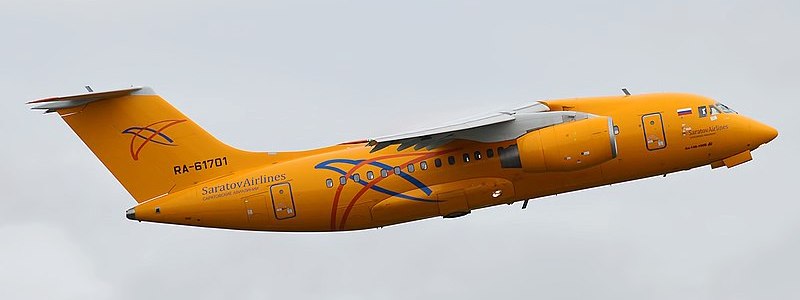Russia grounds all AN-148 aircraft due to safety concerns

Russia’s transport agency Rostransnadzor ordered all of the country’s airlines to ground their AN-148 aircraft due to safety concerns. The order comes a month after a deadly crash of Saratov Airlines’ AN-148, which killed all 71 people on board on February 11, 2018.
The decision was made after the inspection of Saratov Airlines, said Rostransnadzor chief Viktor Basargin as reported by Radio Free Europe Radio Liberty.
The cockpit voice recorder from a Russian airliner that crashed outside Moscow in February captured the desperate last words of the pilots as they tried to reverse the aircraft’s downward course shortly after takeoff, a news report says.
The Moscow Times report that 27 An-148s are operated in Russia. Saratov, Rossiya, Angara airlines, and the Russian Aerospace Forces will be affected by the order to ground the aircraft.
In addition, following the inspection of the Saratov Airlines, Russian federal air transport regulator Rosaviatsia limited the validity of Saratov’s certificate until April 27, 2018.
Saratov’s AN-148 crashed on February 11, 2018, killing all 65 passengers and six crew members aboard the plane, six minutes after takeoff. According to Moscow-based Interstate Aviation Committee (MAK), the heating elements for the gauges were not switched on before the aircraft departed from Moscow’s Domodedovo airport on a flight to the Urals city of Orsk.
The Russian An-148 airliner, carrying out a domestic flight, crashed in the Moscow Region on February 11, 2018, killing all 71 people onboard. Investigators maintain that wrong data of flight speed, apparently due to icing, could have led to the crash. The yet unanswered crucial question is whether the pilots failed to switch on the heating unit or was it a technical issue that led to speed sensors’ malfunction.
The flight recorders found on the crash site indicate that two gauges displayed different speeds of the plane before the crash – one was rising rapidly while the other one displayed zero, according to MAK. The emergency situation occurred approximately 2 minutes into flight. With the difference of speeds displayed widening, the crew switched off autopilot and started manually piloting the aircraft, which unfortunately crashed few minutes later, six minutes after takeoff.
Source – AeroTime

